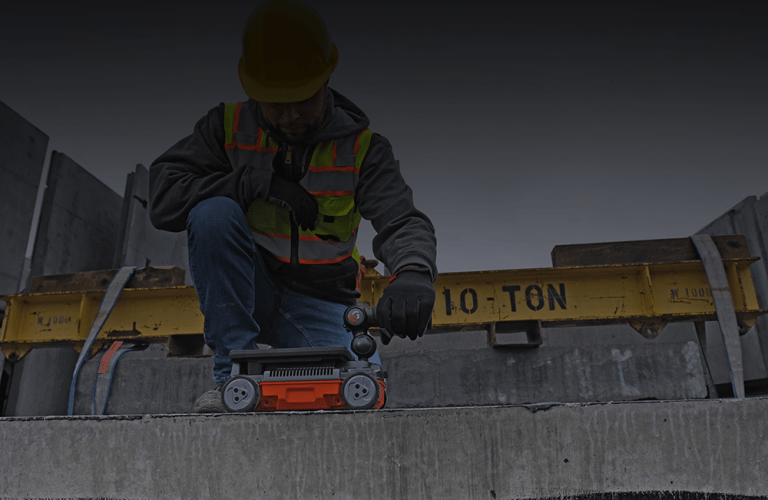Discover RainierGPR Service Areas for Professional Concrete Scanning
Discover RainierGPR Service Areas for Professional Concrete Scanning
Blog Article
Concrete Scanning: A Crucial Action In The Direction Of Making Certain Architectural Integrity and Safety And Security
In the world of construction and facilities upkeep, the value of concrete scanning can not be overemphasized. This careful process holds the vital to introducing possible threats hidden underneath the surface area of apparently solid frameworks. By employing innovative modern technology and methodologies, concrete scanning acts as an essential device in making sure that the honesty and safety of bridges and buildings are supported to the highest possible standards. Nevertheless, past its surface-level ramifications, the function of concrete scanning expands much deeper than fulfills the eye.
Significance of Concrete Scanning
Concrete scanning plays a vital role in making certain the architectural honesty and security of buildings and framework projects. By making use of sophisticated innovations such as ground-penetrating radar (GPR) and electromagnetic induction, professionals can non-destructively evaluate concrete structures to spot prospective flaws, gaps, embedded items, and support layout. This procedure enables early detection of anomalies that might endanger the security of a framework, protecting against expensive problems and making sure the security of owners.
Before boring, reducing, or coring into concrete, scanning helps identify the accurate places of rebar, post-tension wires, and various other ingrained components, minimizing the risk of unexpected hits that can lead to structural weak points. In addition, concrete scanning help in high quality control by validating the density of concrete covers and spotting any type of disparities that may influence the overall sturdiness of the framework.
Innovation for Concrete Inspection

Benefits of Very Early Discovery
Timely discovery of architectural problems can significantly mitigate dangers and guarantee the longevity of building projects. By recognizing possible problems early in the building process, stakeholders can take aggressive steps to deal with concerns before they rise into bigger and much more costly problems. Among the crucial benefits of early discovery is the prevention of architectural failures, which can posture major security threats and result in task hold-ups and monetary losses.
In addition, early detection permits for timely fixings and maintenance, which can help prolong the life-span of the framework. By attending to problems without delay, building and construction groups can avoid pricey repairs or also the demand for early replacement of structural parts. This aggressive technique not just saves time and cash however likewise boosts the general safety and security and sturdiness of the construction job.
Furthermore, early detection can enhance job preparation and decision-making by offering stakeholders with beneficial insights into the condition of the structure. Armed with this details, project supervisors can make informed options relating to building timelines, methods, and materials, causing more reliable and effective job end results.
Guaranteeing Structural Security
Making sure the structural security of a construction task is vital to its safety and security and longevity. Concrete scanning plays an important role in guaranteeing structural security by detecting possible concerns such as gaps, delamination, or support site web deterioration that could compromise the honesty of the structure over time.
By utilizing advanced scanning innovations like ground-penetrating radar (GPR) and electro-magnetic induction, construction professionals can non-invasively inspect concrete structures to determine areas of concern underneath the surface. This aggressive strategy permits the very early discovery of flaws or weak points, allowing timely fixings or support to avoid structural failings.
Regular concrete scanning throughout different building stages and throughout the life cycle of a framework can assist maintain its security, minimize threats, and make certain the safety and security of residents. By prioritizing structural stability with concrete scanning, building and construction tasks can enhance their resilience and longevity, eventually adding to higher safety and long life.

Avoiding Important Failures
Carrying out regular evaluations, such as concrete scanning, can disclose covert defects like voids, fractures, or corrosion that could jeopardize the stability of a framework. By utilizing innovative scanning innovations like Ground Passing through Radar (GPR) or Concrete X-ray, designers can non-destructively examine the condition of concrete and identify weak points that require reinforcement or repair service.

Conclusion
In final thought, concrete scanning plays a critical function in making certain architectural honesty and safety by making use of innovative modern technology for early detection of possible concerns. This proactive method helps protect against important failures and ensures the security of frameworks. It is necessary to prioritize concrete assessment as a typical technique to protect the durability and security of buildings and facilities.
Concrete scanning plays an essential function in guaranteeing the architectural stability and security of structures and framework jobs. Furthermore, concrete scanning help in top quality control by confirming the thickness of concrete covers and spotting any type of disparities that might influence the general resilience Check This Out of the framework. Concrete scanning plays a critical duty in guaranteeing architectural security by identifying potential concerns such as gaps, delamination, or reinforcement rust that could jeopardize the stability of the framework over time.

In final thought, concrete scanning plays a crucial role in making certain structural honesty and safety and security go now by making use of innovative innovation for early discovery of possible issues.
Report this page